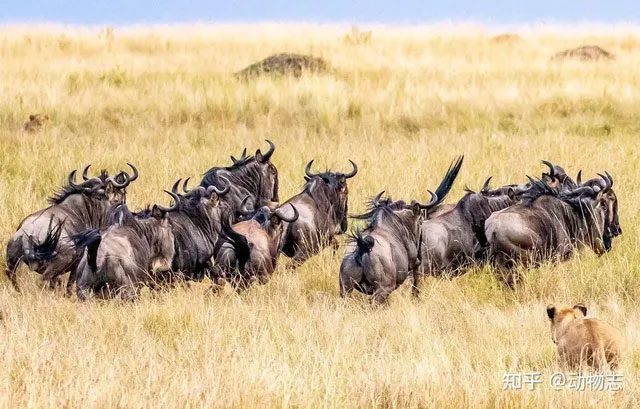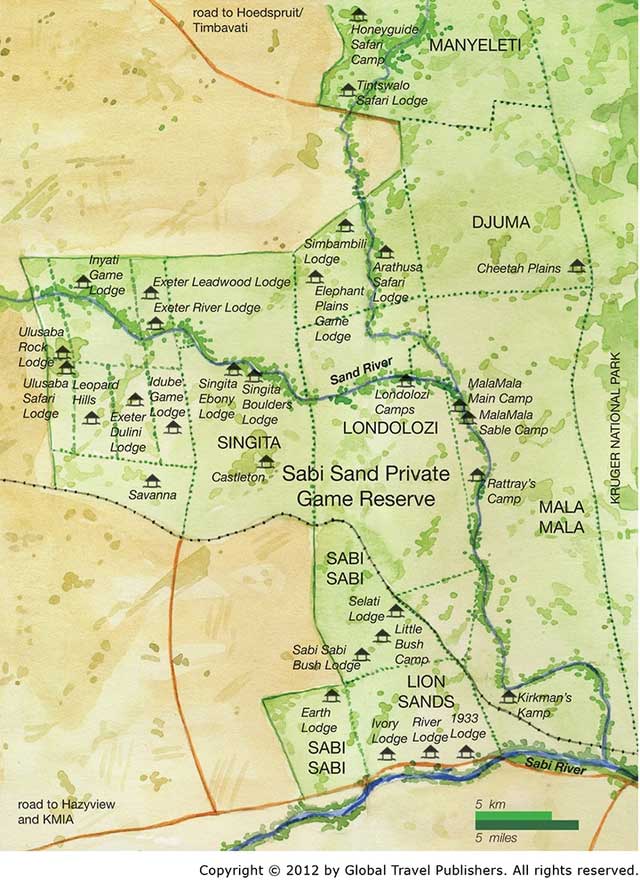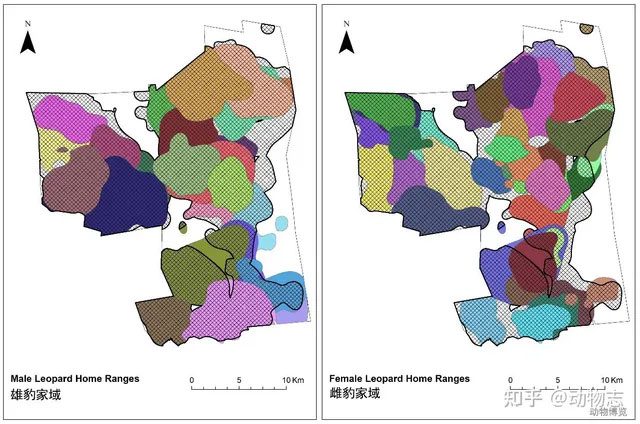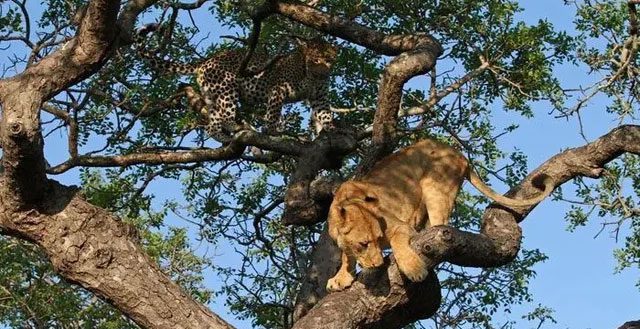If you enjoy watching the animal kingdom, you have probably seen numerous instances of lions chasing and stealing prey from leopards in Africa. However, recent research indicates that although these two species share a common ancestor, lions are specialized hunters that actively pursue and kill leopards.
In December 2021, a tourist captured a remarkable video at the Malamala Game Reserve in South Africa. The video shows an adult male leopard surrounded by a pride of 12 lions. Despite the leopard’s attempts to defend itself and fight back against the lions, it ultimately met its demise at their jaws.
This is not the first documented case; earlier, another adult male leopard was attacked by a lioness in the Sabi Sands Game Reserve, South Africa. This unfortunate leopard was caught and killed by the lioness before it could climb a tree for safety.

Leopard attacked by lions.
In reality, in Africa, leopards inhabit 91% of the areas where lions are found, and reports of lions killing leopards are frequent. As the weaker party, how do leopards manage to coexist with lions?
This article will detail how South African leopards use their unique skills to achieve a peaceful coexistence with lions.
Environmental Profile of South Africa
First, we need to understand the basic situation regarding the natural environment of South Africa.
The predominant landscape here is the savanna, which includes a variety of plant species, with the densest vegetation found in riverine forests, followed by shrubs, and the least dense in grasslands.
The preferred prey of lions is the African buffalo. In riverine forests, food for buffalo is most abundant, and buffalo populations are also highest there. Lions are ambush predators, and the riverine forest environment is conducive for them to stalk and hunt. Therefore, the highest lion populations are found in riverine forests, followed by thickets and then grasslands.

The preferred prey of lions is the African buffalo.
Coincidentally, the favorite prey of leopards, the impala, has a similar distribution density as that of African buffalo and lions.
Moreover, leopards are also ambush hunters and prefer to hunt in environments similar to those favored by lions. Thus, to survive, leopards must navigate a difficult choice.
- They can avoid lions and move to open grasslands for safety, but food is scarce there.
- Or they can try to live in the riverine forests, facing lions more frequently, where they can find ample food, but risk being killed if discovered by lions.
The Leopard’s Choice

Map of Sabi Sands Game Reserve. Local habitats include forests, thickets, and grasslands.

Correspondingly, looking at the distribution of local lions, the redder the color, the higher the lion density; the greener, the lower the density; white areas indicate no lions.
When we examine these two maps, it is clear that lions prefer to inhabit dense forests and thickets, with very few in open grasslands, and virtually none in pure grasslands.
Looking at the territorial maps of male and female leopards in the area, we can see that the territories of leopards almost completely overlap with the distribution of lions. Wherever there are many lions, there are also many leopards, and where there are no lions, there are no leopards.

We can see that leopards have chosen the second path, despite knowing lions are in the forest.
In 10 other reserves in South Africa (covering a total area of 5,070 square kilometers), research findings have been consistent: leopards do not abandon access to riverine forests due to the presence of lions. Where there are lions, there are also leopards. Avoiding lions would mean not being able to catch prey.
At this point, a real dilemma arises for leopards: how can they eat well without being killed by lions?
In 36 Strategies, Running is the Best Policy
The strategy of leopards can be summed up in one word: “run.” Leopards are excellent at hiding and climbing trees, which are considered two extremely important survival skills. Currently, in Africa, due to the lack of these two abilities, African wild dogs must avoid lions over vast areas and live in smaller habitats that lions do not prefer—grasslands—where prey is very scarce.
In prehistoric times, the spotted leopard, a close relative of lions, lived everywhere, but after the rise of lions, they declined due to lion attacks and now only exist in a corner of South America. Leopards have managed to coexist with lions thanks to these two skills.

Leopards can climb to higher places than lions.
Research in Zimbabwe shows that when a leopard detects the presence of a lion, it will move at double its normal speed, quickly escaping the danger zone. This does not imply that lions are slower than leopards. However, the weakness of lions lies in their endurance; leopards can maintain a high speed for longer than lions. This is because lions have smaller hearts, which do not provide enough oxygen for sustained high-speed running.
Additionally, the advantage of leopards also comes from their ability to climb trees; with their smaller and more agile bodies, they can reach higher places than lions.





















































